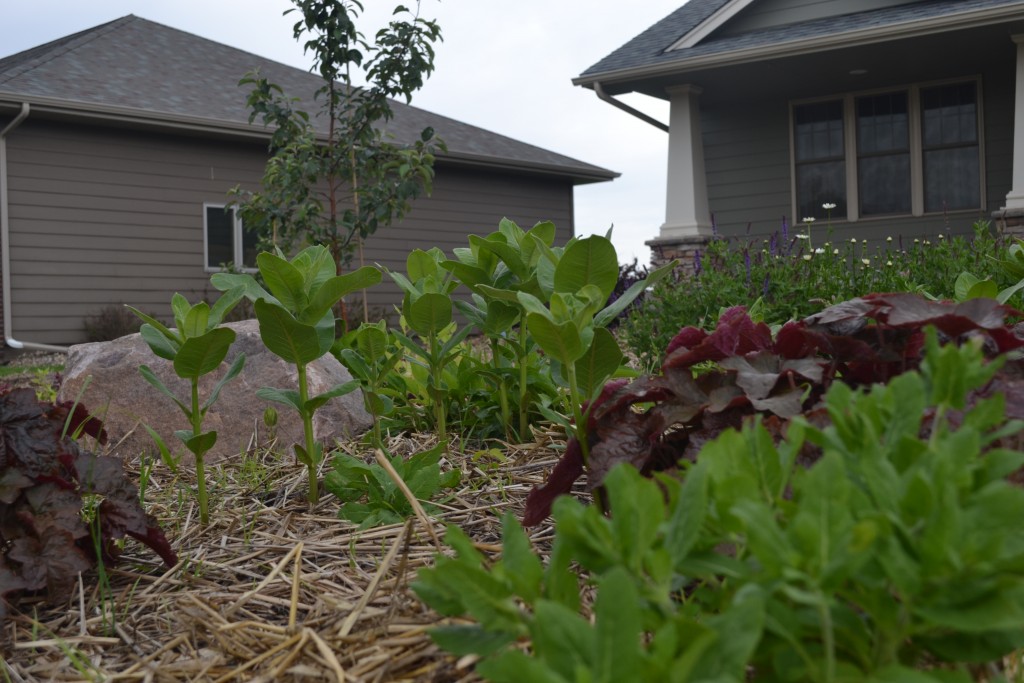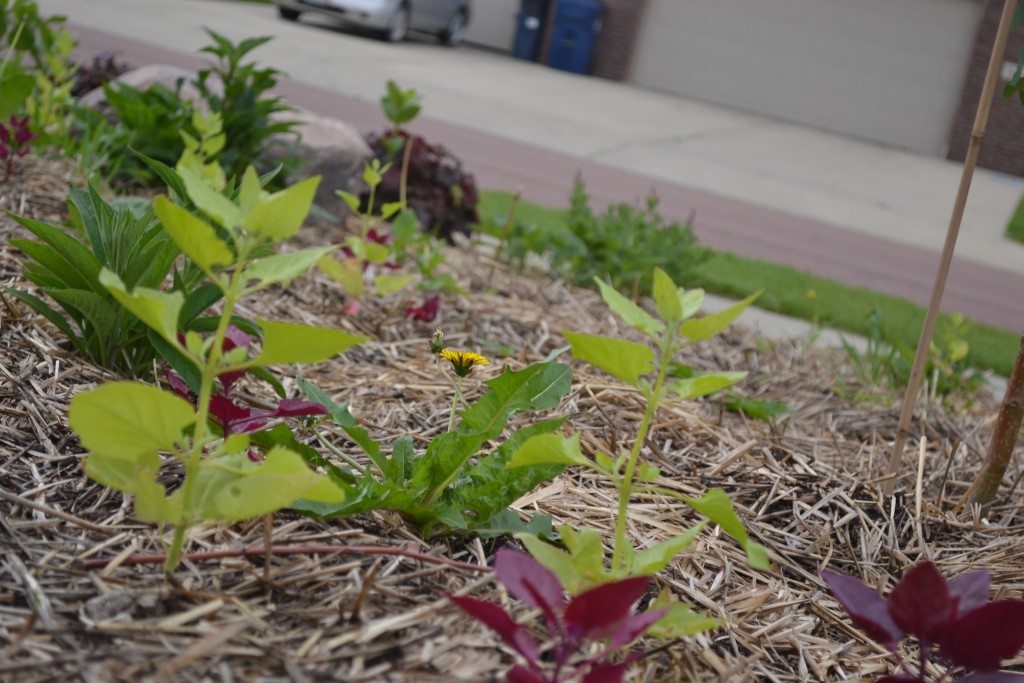A great benefit of transforming my suburban-type yard from an unsustainable lawn to a sustainable ecosystem is setting an example. I can use the process of transformation to inform neighbors, who undoubtedly have many opinions and questions. I’ve been getting a few general questions since I started the process, but yesterday I got some of the more accusational types.

“Oh, this here is a weed,” as the neighbor points out my thriving milkweed. She continues on to warn me that it’s a noxious weed and that she doesn’t want it blowing into her yard. Here is a good list of responses that I’ll never have time to spout off in person:
- Milkweed is edible and delicious (first-hand experience), and it grows freely and without any effort or cost on my part.
- Milkweed’s other human uses include: its bast fibers can be used as cordage or woven into fabric; its floss can be used as stuffing for insulation (better than down) or buoyancy (used to stuff life jackets in WWII); and its milky sap has medicinal properties.
- Milkweed is a native plant. Native plants are not noxious weeds, they are supposed to be here.
- Milkweed grows everywhere: in the wild, in at least one other neighbor’s garden, by the interstate exit a few blocks from here, and in nature area a couple miles from here, to name a few.
- Milkweed is a vital nectar source for native bees, wasps, and butterflies.
- Milkweed is the host plant of the Monarch Butterfly larvae, a species whose numbers are in drastic decline. That means this butterfly lays its eggs only on milkweed species. Without milkweed, there is no monarch.
- Milkweed’s deep, extensive roots help to break up compacted soil and bring nutrients from deep down up to the surface.
- Milkweed is beautiful in a cottage garden setting.
- Milkweed flowers smell heavenly.

“And I believe dandelions are also noxious weeds, and they can only get to a certain height,” she continues, referring to my lawn filled with all kinds of useful plants including the ubiquitous dandelion. Oh, dandelions. The utter hatred Americans feel for dandelions. Only:
- Dandelions are edible and extremely healthy, and they grow freely and without any effort or cost on my part.
- Dandelions are medicinal.
- Dandelions are a vital source of pollen for bees, especially in the early spring, as it is one of the first flowers to bloom.
- Dandelion seeds are a food source for finches. If you want goldfinches, let the dandelions grow and go to seed. They will come.
- Dandelions are not on the South Dakota list of noxious weeds.
- Dandelions are growing profusely in many, many lots around this neighborhood, especially the ones that are cleared but have not yet been purchased to build. Adding my one yard to that list will not make any noticeable difference in seed dispersal to a neighboring lawn.
- Dandelions’ tough tap-roots break up compacted earth and mine nutrients from below, bringing them to the surface as the plant dies back.
- Dandelions’ yellow flowers add color to otherwise boring, green lawns. My son thinks our yard is the prettiest yard in the neighborhood simply because of the presence of dandelion flowers. Remember, beauty is subjective, and just because you do not appreciate the beauty in something, it does not mean others don’t.
- Dandelions present in youth a magical experience that remains in the memory of every human who has ever had the opportunity to blow the seeds off of a dandelion head.
- Every mother deserves to receive a dandelion bouquet from her loving child.
If those arguments are not enough, my final thoughts are:
- To kill a native and/or extremely useful plant (especially with poisons) in order to grow a monoculture of relatively useless, non-native, and extremely resource-intensive plant like lawn grasses can be considered reckless and inconsiderate to our future generations and to wildlife.
- My yard is a Certified Wildlife Habitat, and in order to keep it that way, I will continue to avoid chemicals and provide the necessary components for a healthy ecosystem.
- I am a responsible gardener, and I do and will keep South Dakota-labeled invasive species out of my yard.
Now, I must remember that just as I feel put off from chem-lawns (and keep my toddler off of them), the people who have these lawns probably feel the same way about mine. My goal is to inform others, but also to maintain an acceptable appearance to my neighbors. My goal is for even those with chem-lawns to find my yard beautiful. I’m sure that will require nearly eliminating large lawn areas so as to avoid the dandelion hatred, but I will continue to work at this. I don’t want to be that neighbor. I simply want to be one who inspires change.